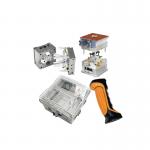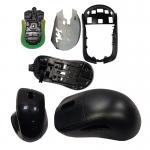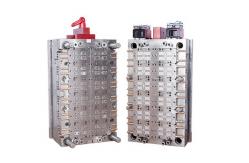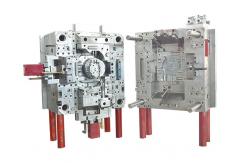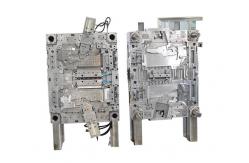Mirror-finish polishing of injection molding dies is an intricate
process that demands meticulous attention to detail and a profound
understanding of materials, machining, and molding techniques. This
highly specialized process ensures not only the aesthetic
perfection of the final product but also its functional integrity
and production efficiency.
The steel material chosen for the mold is the foundation of the
mirror-finish process. It must possess a unique balance of
machinability, hardness, and corrosion resistance. High-grade
stainless steels and specialty alloys are often selected due to
their ability to maintain a smooth and reflective surface even
under high temperatures and pressures encountered during the
injection molding process. The selection of steel also impacts the
polishing time and the ease with which a mirror finish can be
achieved.
The polishing process itself is a multi-step journey that begins
with rough grinding and progresses through progressively finer
abrasives and polishing compounds. Each step requires careful
monitoring and adjustment to ensure that the surface remains free
from scratches, pits, or other imperfections. Modern polishing
equipment, combined with skilled operators, enables precise control
over the polishing forces and speeds, resulting in a uniform and
defect-free mirror finish.
CNC machining precision is another crucial aspect of mirror-finish
mold production. High-precision CNC machines are capable of
creating intricate mold geometries with micron-level tolerances.
This precision ensures that the mold's surface is smooth and
continuous, ready for the polishing process. Advanced CAD/CAM
software is often utilized to design and simulate the machining
process, allowing for the optimization of tool paths and cutting
conditions for maximum precision and efficiency.
The cooling system, or "waterways," within the mold is another
essential component. Proper cooling is critical for maintaining the
structural integrity of the mold and ensuring consistent product
quality. The design of the waterways must take into account the
mold's geometry, the injection material, and the desired production
rate. Effective cooling systems minimize thermal deformation,
reduce cycle times, and improve the overall efficiency of the
injection molding process.
The injection molding parameters, including injection pressure,
temperature, and speed, must be carefully calibrated to match the
specific requirements of the mirror-finish mold. These parameters
directly influence the flow and solidification of the molten
plastic within the mold, affecting the final product's surface
quality and mechanical properties. It is essential to strike a
balance between ensuring complete filling of the mold cavity and
minimizing stress and deformation during the cooling phase.
In addition to the above-mentioned factors, the maintenance and
care of the mirror-finish mold are also critical. Regular cleaning
and inspection of the mold, along with timely replacement of
worn-out components, are essential for maintaining the quality and
performance of the mirror finish.
In conclusion, mirror-finish polishing for injection molding dies
is a comprehensive and demanding process that requires a synergy of
high-grade steel, precision machining, optimized cooling systems,
and carefully calibrated injection molding parameters. A
well-executed mirror-finish mold not only enhances the aesthetic
appeal of the final product but also ensures its functional
integrity, optical performance, and efficient production
capabilities. With the continued advancements in materials,
machining techniques, and injection molding technology,
mirror-finish polishing will continue to evolve, delivering
ever-higher standards of quality and efficiency in the
manufacturing industry.


